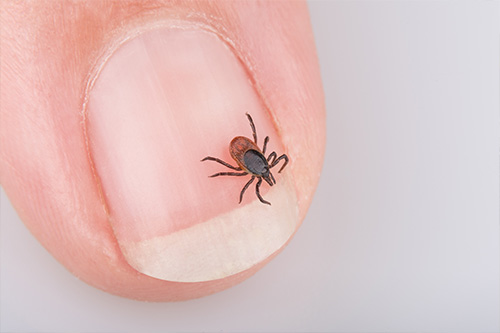
Ticks: What they are, where do they come from, how can we identify them and how to prevent them?
Although there are several hundred different species of ticks around the world, 3 of those species can be found in Ontario. The black-legged tick, dog tick and less commonly the lone star tick.
Lets start with the basics on what a tick is. Ticks are insects that are part of the arachnid family, meaning they are related to spiders. (Yuck!) They have been around for millions of years and some even have the potential to transmit disease, not only to us, but our furry family members as well! Ticks require blood meals to complete their life cycle, and they have no preference where this meal comes from, humans, dogs, cats, bunnies, birds and even snakes! Once full, they drop off and lay THOUSANDS of eggs. (Also YUCK!)
Where do they come from?
For many years, Canada was an unsuitable location for ticks. It was frankly to cold for them to stay. In recent years, due to climate change, ticks have been setting up home here. Ticks much prefer warmer weather, actually anything about 4 degrees celsius is perfect for them. Therefore naturally they are more prevalent in southern states, but what other animal travels from warm place to warm place? Migratory birds of course! As birds travel up to Ontario in the summer months, they bring these nasty hitch hikers. At first we found ticks to be located in more isolated and untraveled places, like heavily wooded areas. We are now discovering them in more local areas, like conservation areas, dog parks, playgrounds and even back yards! They prefer long grass, solely because it helps them grab onto their next meal easier. This doesn’t mean they are not still determined and will use small blades of grass too!
Identification
We will touch on the 3 most common ticks found in our area and how to spot them.
Brown Dog Tick (Rhipicephalus sanguineus)
The largest and most common of the 3 we are going to touch on, but still no bigger than a grain of rice! These guys can live their entire life cycle indoors. They don’t have distinguishing features other than being all brown. Like their name indicates, they prefer to get meals from dogs, but have been known to feed on humans as well. They have the potential to transmit disease to dogs, including Rocky Mountain Fever and Ehrlichia.
Black legged Tick (Ixodes scapularis)
Commonly know as deer ticks, these ticks are quite tiny in their early life stages, about the size of pen point! Once they start feeding and get a full blood meal, they often grow to the size of a dime. These little suckers also have the possibility of transmitting disease. Most commonly known as lyme disease. Yes, your furry family member’s can get lyme disease as well!
Lone Star Tick (Amblyomma americanum)
These ticks are far less common in our area, but not completely absent. They are slightly bigger than the deer tick, but females have a very distinct white dot in the centre of their back. After a blood meal, this white dot can appear closer to her neck. Males have more white in streaks around the edge of their bodies.
Tips on how to catch’em before they bite!
-do a thorough check-over after your outdoor adventure
-wear light coloured clothing
-tuck your pants into socks or shoes
-get a family member to check hard-to-reach areas like behind your ears and in your hair
Tips for your furry family members!
-check between toes, behind/in ears, armpits, groin and around lips after adventures
-try keeping fur trimmed short to be able to see ticks sooner
– keeping them on prevention spring through late fall
Prevention and how we can help!
There are currently 3 prescription oral products on the market that provide tick prevention (& also kill fleas): Nexgard, Simperica, and Bravecto. All three are chewable tablets that are given either once monthly or every 8-12 weeks. Nexgard is a convenient once-monthly chew to prevent fleas and ticks. Nexgard Spectra is an even better product that includes flea/tick prevention as well as heartworm and intestinal parasite protection all in one simple chewable tablet. Simparica is a once-monthly chew used for tick-only prevention, it is often paired with the topical product Revolution to provide heartworm, flea, and intestinal parasite prevention. Lastly, Bravecto is a chewable tablet (also available in topical form) for flea/tick prevention. It is given every 8-12 weeks depending on your pet’s risk factors for specific tick species. There is also a non-prescription topical medication for tick and flea prevention called Advantix. It is not safe to be applied around cats. Advantix works differently than prescription products and may be the best choice for dogs who are sensitive to the Isoxazoline family of drugs or won’t take oral medications.
We know deciding which product for your pet can be overwhelming, so we are here to help! Contact us to discuss which option is the best for your pet.
“TickEncounter Resource Center.” Tick Encounter Resource Center, 2015, https://tickencounter.org/.
https://tickencounter.org/tick_identification/brown_dog_tick
https://tickencounter.org/tick_identification/deer_tick
https://tickencounter.org/tick_identification/lone_star_tick
